Motorola
Motorola One Action: a real action-cam in a mid-range terminal?
Aprox. 249€ - see price -
See specificationsA few months after a rather convincing One Vision, Motorola takes advantage of the summer to announce a new version of its terminal with an "action-cam". Sufficient particularity to justify the purchase of such a device? Verification.
Our review
Presentation
The third model in Motorola's One series in less than a year, the Motorola One Action is the market most "special" smartphone. If apparently everything is classic and it seems out of the same mold as the One Vision, its "action-cam" mode intends to allow it to stand out against the competition.
Launched at a price of 289 € (and only on Amazon), it is strangely positioned. Comparable to a terminal like the Wiko View3 Pro (yet 40 € cheaper), it can also be opposed to the Xiaomi Mi 9T, or the Samsung Galaxy A50. What if its main rival was none other than the Motorola One Vision? Finally, the smartphone closest to One Action in terms of aesthetics and price.
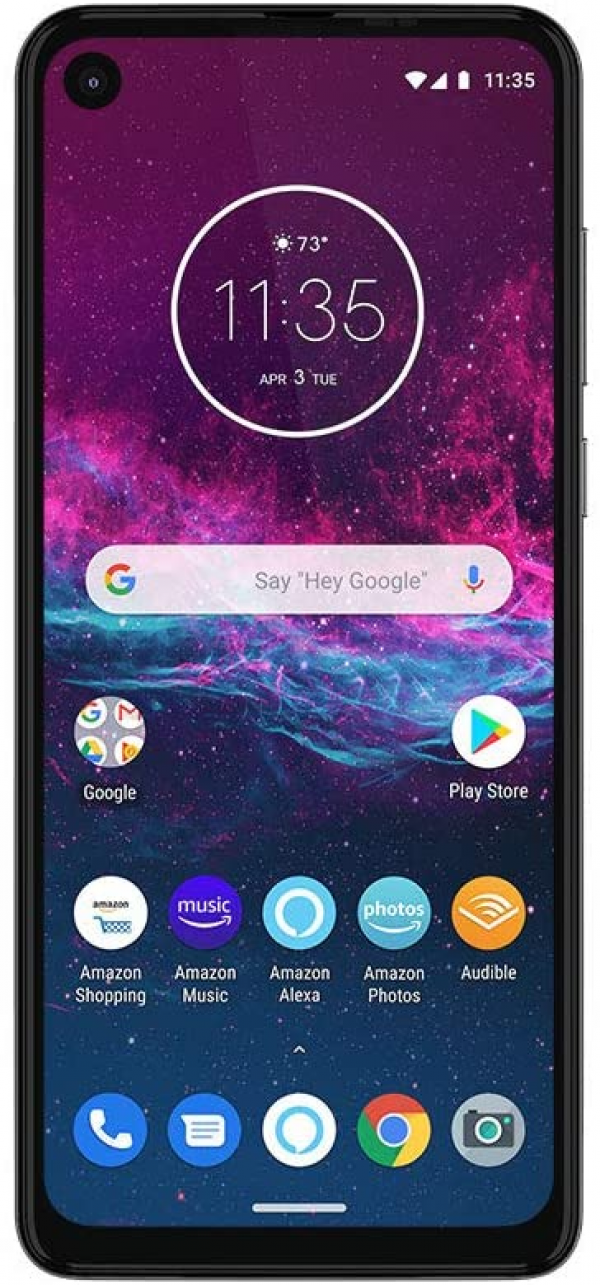
Ergonomics and design
While the One Vision inaugurated the 21: 9 format at Motorola, the One Action does not cause any "wow" effect. Indeed, the terminal is a true copy, with the exception of an additional video sensor, of its predecessor. Also we find this same "large" 6.3 inch slab, the same buttons positioned a little too high - for those who do not have the hands of basketball players. Handling the terminal with one hand requires great elasticity of the fingers that not all One Action users will have.
However, the external controls are fairly reactive, like the back fingerprint sensor, which works without a hitch. The One Vision panel thus occupies a little more than 82% of the front face. This ratio, in the standard of what is currently being done, is made possible thanks to the punch where the selfie module is housed. However, the diameter of a little more than 7 mm of this punch is much larger than that of the Samsung Galaxy S10e (about 4 mm), for example.
Sold from € 289, the smartphone does not overlook any of the attributes of more high-end devices. It can accommodate two nano-SIM cards and a microSD card. It also has 128 GB of storage, of which a little over a dozen already occupied by the OS. It has a USB-C port as well as a 3.5 mm mini-jack socket. Note that if it is not waterproof, it is still IP52 certified, which protects it from splashes and dust.
The only visible difference with the One Vision is to be found on the back of the device. The One Action has an additional video sensor. Intended to film sequences like an action-cam, it brings a little singularity to a very wise terminal.
The One Action always has a 3.5mm mini jack. Located on the upper edge of the smartphone, it is not among the best of its kind, but it gives more convincing results than that of the One Vision. It has a very wide dynamic range, the distortion is fairly well contained. Crosstalk management is not without all reproaches. Likewise, the power delivered is really limited, and a helmet requiring too much energy will not give its full potential.
The single speaker offers a correct sound, but we will not push it to the maximum to avoid an overdriven sound.
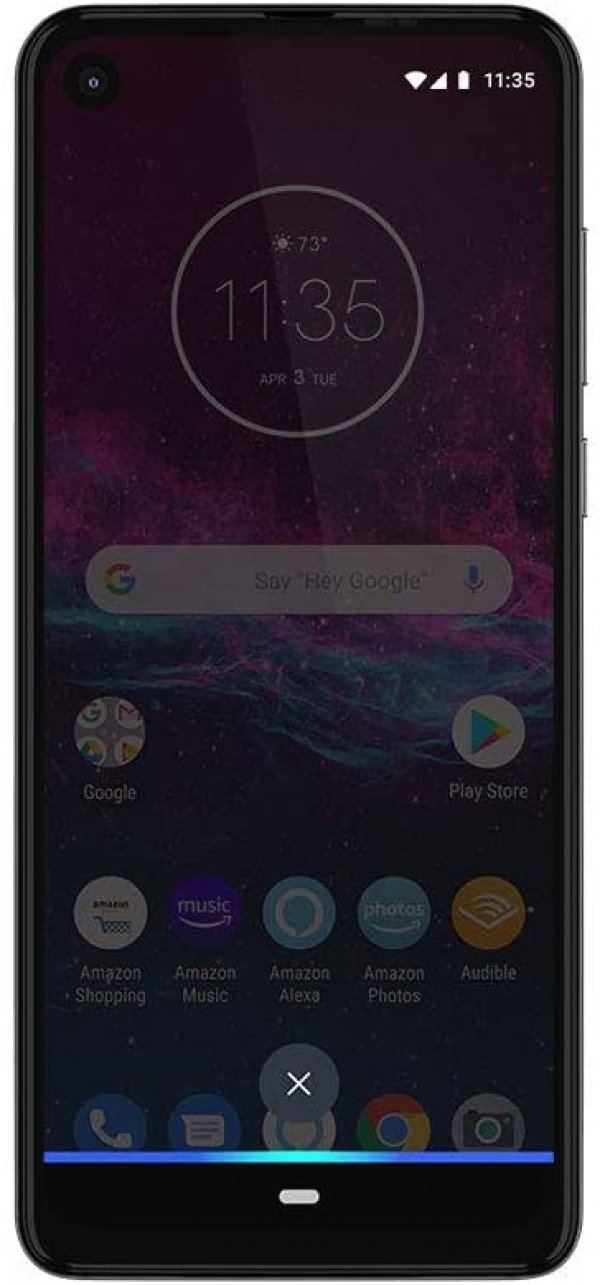
Screen
The Motorola One Action has the exact same panel as the One Vision. So we find a 6.3 inch IPS LCD screen, with a definition of 2,520 x 1,080 px and a resolution of 432 ppi. And unfortunately, we also find many faults with this poorly calibrated screen. However, this time, Motorola has revised its copy and offers to choose between several color profiles: natural, contrasting or saturated. We opted for the first profile, the most neutral; the last two profiles really saturate the colors too much.
Alas, even in this "natural colors" mode, we get a far too high color temperature of 9.037 K (where the expected standard is 6.500 K). The result is a shade that is far too cold, fairly clearly visible on the screen. The colorimetry only partially corrects the shot, reaching 4.1 (it is estimated that below 3, the human eye no longer perceives the color drift). The pastel colors drifting particularly, this ensures that the terminal has a fairly poor color reproduction. Finally, despite the possibility of having several profiles, the One Action misses the mark.
Since the panel is IPS, the infinite contrast ratio is not appropriate and here capped at 1,238: 1. Regarding the maximum brightness, the One Action does a little worse than the One Vision with a brightness measured at 421 cd / m², it is correct without being great. But, combined with a fairly contained reflectance, it will allow the terminal to be used under the sun. For lovers of night activities, the minimum brightness of 4.6 cd / m² may be a little too strong, so the exposure time will have to be limited. Concerning the fluidity, we observed a tactile delay of 82 ms and a persistence of 19 ms, that is to say almost the same values as those noted for the One Vision, and which remain in the low average.

Performances
As with the panel or even ergonomics in general, the One Action is similar in all respects to the One Vision. It thus embeds the same Samsung chip, the Exynos 9609, octa-core clocked at 2.2 GHz and supported by 4 GB of RAM. We are not dealing with the most powerful of terminals, but the opening or closing of applications and the sequence between them is carried out smoothly. Android 9 and its One overlay are very well optimized to provide a good user experience.
By applying our new test protocol, the One Action does not fail. For the RAM test, he obtains a very correct score of 87.54, when the first in our ranking, the OnePlus 7 Pro, reaches 100 points.
On the side of the game test, the result is worse. With a score of 58.04, it is slightly below the average in our ranking. But it does not deserve. With an average of 32 i / s in play, this remains fluid enough to play on a daily basis, provided you are not a professional "gamer". In this case, this terminal is not necessarily intended for you.
Finally, the temperature rise of the terminal does not exceed 35 ° C. Even after a rather intense session of capturing videos and photographs. In addition, the heating dissipates fairly quickly.

Photo
Here we come to the sensitive point of this Motorola One Action. It differs from One Vision only by the presence of a third sensor. Only intended for video, with a resolution of 16 Mpx, with a very wide-angle optics of 117 ° and opening at f / 2.2, it is put forward as being an action-cam.
True UFO in the world of smartphones, there is a similar device on the Crosscall Trekker-X4, for example. We have devoted an article to this "action-cam" in which you will find all the details of our evaluation. Attention "divulged", it is not famous ...
Motorola is trying to regain its splendor of yesteryear, and this requires the launch of an intriguing product. The new Motorola One Action stands out ...
Otherwise, the rest also differs from One Vision. Reduced price requires, it no longer has a 48 Mpx sensor, but a simpler one, 12 Mpx, with a lens opening at f / 1.8 (equivalent to 26 mm in 24x36). The latter is accompanied by a 5 MP sensor to improve portraits. Finally the front camera is 12 Mpx and its lens opens at f / 2.0, where on the One Vision, it reached 25 Mpx.
By day, the main sensor of the One Action is doing well. We would of course have preferred the One Vision 48 MP sensor, but we will be content with 12 MP. Obviously, facing the Xiaomi Mi 9T, one of the best in its price category, it is lagging behind. The colors returned by the Motorola are quite bland, the details are lost a little and the sharpness is far from exceptional. At least we can't blame him for having a heavy hand on software enhancement as is the case with the Mi 9T.
At night, the One Action displays its limits a little more. The noise is very present, the details tend to disappear and the colors are duller. However, the picture is also not as degraded as what can be observed on entry-level smartphones. He manages to hold - a little head to the Mi 9T. But the latter, it must be admitted, is not a lightning of war in low light.
Borrowing once again the portrait mode of the One Vision, that of the One Action is rather satisfactory. The subject is fairly well isolated from the background. The vagueness does not seem too artificial, without however reaching heights of realism. This bokeh effect is more successful in the rear thanks to the 5 MP sensor dedicated to the measurement of the depth of field. At the front, the 12 MP sensor offers acceptable selfies, but on condition of not activating beauty mode, because the software straightener then transforms anyone into a doll of wax.
Finally, the video left us perplexed in many ways. On the one hand, the main sensor is capable of filming in 4K and up to 30 fps, and even of offering slow motion in 120 fps. The quality of the videos is reasonable despite a sometimes capricious autofocus.
On the other hand, the One Action therefore offers an "action-cam" function that we detailed at length in a previous article. This last function is not very common on smartphones; for the record, the Sharp Aquos R2 and R3, like the Trekker-X4, had tried the experiment. And the result is quite mixed: the poor quality of the images, the stabilization and the lack of accessories provided to maintain the device, limit the use as well as the interest of this function.
Recommended article: Lab - Motorola One Action: a camera really ready for adventure?
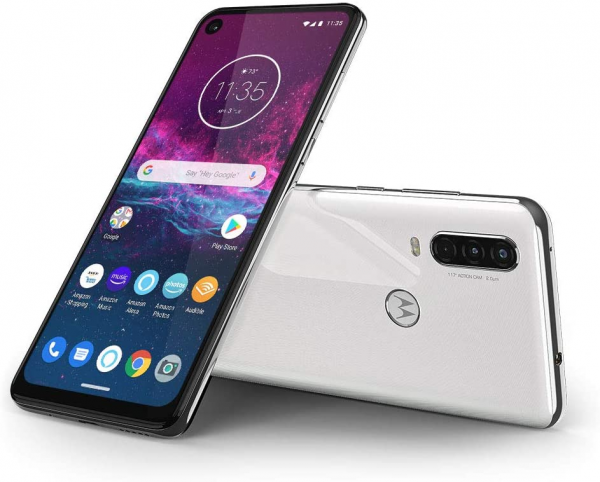
Autonomy
The Motorola One Action comes with a battery capacity equivalent to that of the One Vision, or 3,500 mAh. By using our SmartViser protocol (which simulates intensive daily use with sending SMS, calls, downloads, watching videos, etc.), the One Action did a little better than the One Vision, only switching off at after 16 h 31 min (against 15 h 22 min for the One Vision). To explain this difference, we lean towards a slight software optimization. This result is quite correct and will allow you to hold, theoretically, a little more than two days before having to recharge the terminal.
For recharging, moreover, do not rely on astronomical speeds, since the smartphone is not compatible with fast charging. It therefore takes 2 h 25 min to go from 0 to 100%, with the charger supplied.
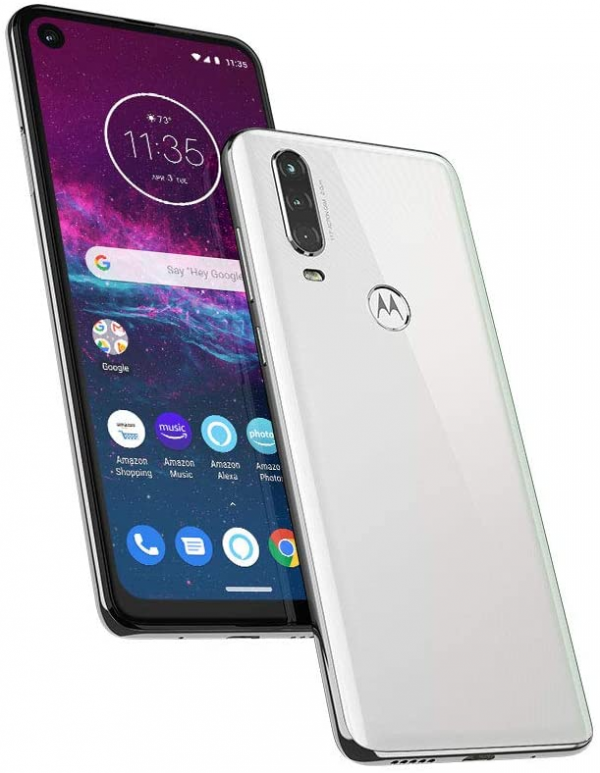
Conclusion
The Motorola One Action has no major unacceptable flaws. It offers everything you would expect from a smartphone in 2019, without standing out completely. There is indeed this "action-cam" mode, but it is not well enough thought out or exploited to be a real strong point. In front of it, for lower prices, we can turn to the Wiko View3 Pro, or even the Realme 3 Pro, which are generally better. The main competitor he can triumph over is, ironically, the Motorola One Vision. Sold for around thirty euros cheaper, the One Action ultimately offers more innovations than its predecessor.
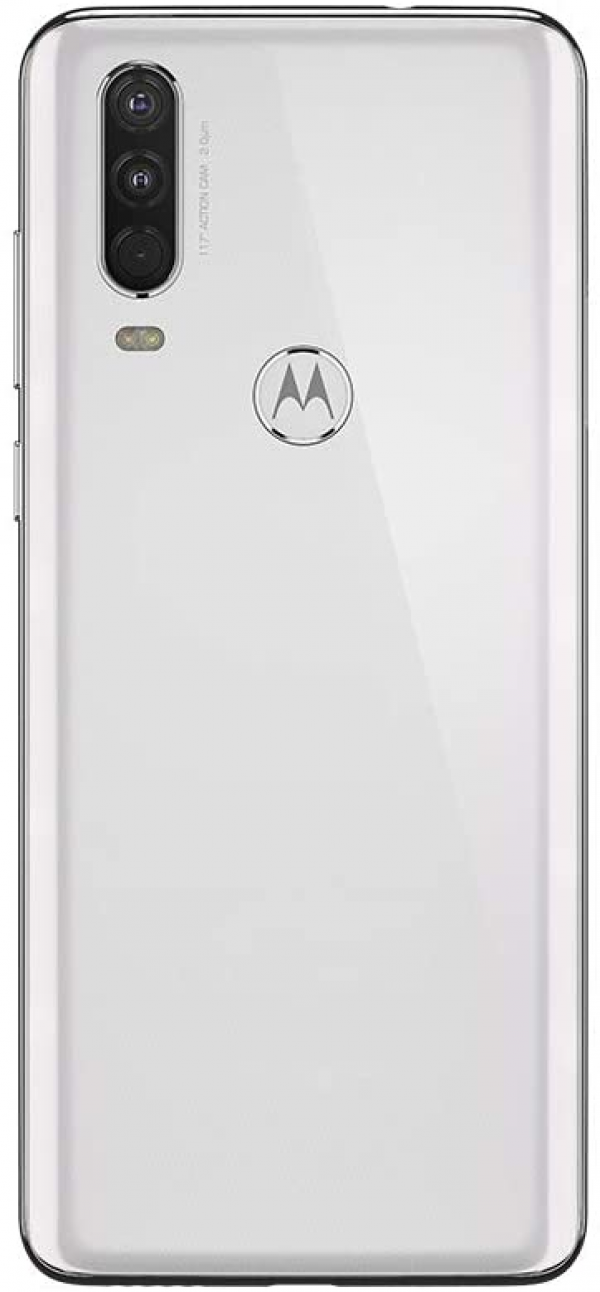
Specifications
Reviews


Beware, it might not work.
This phone looks great but beware. If you are with Sprint do not buy this phone. My wife I spent two days on the phone trying to get this phone activated. We went to the Sprint store. The associate tried 9 different sim cards and it would not work. I'm very disappointed because this phone was for my wife and she was excited about having a new phone. It's like false advertising. It clearly says it works with all major phone companies including Sprint.
Plenty of storage for a reasonable price
My needs for a smart phone are basic not big in photography just basic snap shots or gaming so an Apple or Samsung is overkill. Over the years operating systems and apps files get to eat a lot of storage which slows the processing time of the phone. due to smart apps and other useful apps and music, 32gb became marginal 64gb would have been adequate
but 128gb would last me for a long time. Motorola is an old name in well made products (even though it has changed hands over the years it still is quality) and have had 3 so for and were only replaced due to storage capacity. I looked at many youtube video's although I am sure the reviewers mean well they just review for the market they represent not the average (ADULT) middle of the road user .. I recommend this phone to anyone who wants a good phone for a good price ($ 249 at the time). Alexa since I am a prime customer has also been Invaluable as I am able to integrate many smart home functions in one app, another piece of wisdom is Google has an app called files which helps with storage it will remove all unused, old or a necessary files, although I use a file cleaner regularly the first time it cleared 3gb of junk that accumulated over the years.
As good as the expensive smart phones
This phone came out only in August of this year. It runs android 9 pie, will be upgraded to 10 when it comes out for Motorola. The phone already comes with a clear protection case, temporary screen protector for setup. Setup was nice and easy and I was able to easily transfer my old phones contents and settings in only a few minutes. All of my loaded applications were working great that I transferred. This phone is fast and responsive it has absolutely no menu lag and loads all applications quickly due to its Samsung fast Processor As a benchmark it runs Asphalt 9 with no delay or lag. There is absolutely no delay on loading the internet browser, it is fast and responsive. If you want to spend loads of money go ahead, but all you need is right here. Don't forget Motorola invented the first cellphone. Motorola is still the quality it has always been. Had it the next day, It comes with the amazing Alexa personal assistant that does everything I need. Thank you Amazon.
Very nice budget phone, great video camera
Ordered this to replace my laggy Moto G6. A much nicer phone and runs faster. There are not many cases made for these but luckily it comes with it's own in the box. I had no problems using my Verizon sim card. Connected very fast when changing over. Also my files changed / moved over from my G6 with no issues.
Pros: Nice big screen, thin design, nice video camera. I'm not real concerned with the camera as long as I get pictures. The video camera records in portrait but saves in landscape and that is very nice. It stabilizes your video from shaking (hence the action name). Did a great job when I tested it the video camera. The phone has 128g of internal storage which I'll probably never use. I also have a 128g SD card so that is also a plus.
Cons: hole punch in upper left is huge but not too distracting. Has some bleed out around the hole. I'm not a selfie person so I'll never use the front facing camera. I can't seem to find call screening on this phone. That was great on my G6 when I got robocalls. I would simply send all numbers I didn't know to call screening but you can't do this on this phone (if someone knows how let me know). I don't believe this phone turbo charges. When I plug it in it fully says "charging" & not "turbo charging" like my G6. That doesn't mean the option is not there but I don't see it.
Overall a nice phone for the price. it isn't iPhone or Samsung quality but a very nice phone for a budget phone. Supposed to get the Android 10 update at some point but that was the downfall of my Moto G6 - it couldn't handle Android Pie & began to lag after the update. hopefully this will not do that when they update to 10.
If you're looking for a budget phone this one is great and will do what you need it to do at a great price. Hopefully I can get it at least 2 years it of it.
Comes in a purple box with a phone case and charger. Buy a tempered glass screen protector separately with your order, I did and they shipped together.
Worthy upgrade from Moto G5 Plus
I do not know how to review a phone but here goes ... I think the screen detail is beautiful and colors normal. I like a phone that dim low and this one dim quite low. Being this is a new phone battery life is good and as expected. Charging from 3% to full took 2.5 hours. This is my first experience with NFC and I used it at two retailers so far and has worked flawlessly. This phone supposedly has high powered cameras, but I hard ever use cameras on a phone so I will not be able to describe their performance. It is nice Motorola included a basic plastic phone protector. The only dislike is the placement of the fingerprint reader. Its more naturally to me on the front of the phone. I'm happy with the One Action. I hope Motorola decides to make Mods for it.
Camera Specs less than expected when ordered
The Moto One Action phone is a perfect size for my needs. Confirms that it works on T-Mobile network. I like the 128GB ROM / 4GB RAM but what I'm disappointed about is false advertising, I was expecting Triple camera system (12MP, 5MP, 16MP) on the phone but the phone I received had a camera spec as (Front 12MP / Back 12MP, 5MP, 4MP). There was no 16MP on the phone instead 4MP, the highest is only 12MP. It takes decent pictures but could be better. If it wasn't for that, I would of rated this phone a 4.